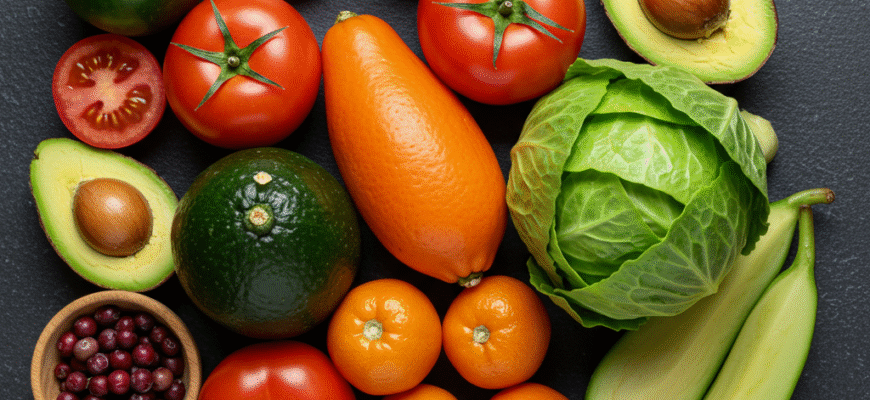There’s a growing buzz around eating locally, a shift back towards connecting with the food on our plates and the people who grow it. It’s more than just a trend; it’s a conscious choice with ripples that extend far beyond our kitchens. Choosing produce grown closer to home offers a surprising array of advantages, impacting everything from taste buds to the local economy and even the planet itself. It’s about rediscovering the rhythm of the seasons and appreciating the bounty available right in our own backyard.
Taste the Difference: Freshness You Can’t Fake
One of the most immediate and compelling reasons to eat local is the undeniable difference in flavor and quality. Produce that travels hundreds, or even thousands, of miles often has to be picked before it’s truly ripe. This premature harvesting allows it to withstand the rigors of long-distance shipping and extended storage, but it comes at a cost: flavor. Fruits and vegetables develop their fullest, richest flavors and optimal textures when allowed to ripen naturally on the vine, bush, or tree.
Think about a sun-warmed tomato picked at its peak versus one that’s hard, pale, and ripened with gas during transit. There’s simply no comparison. Local farmers can afford to let their crops mature fully because the time between harvest and your table is dramatically shorter – sometimes only a matter of hours. This minimal delay means you get produce that’s bursting with natural sweetness, vibrant colors, and crisp textures. It’s food as it’s meant to taste, fresh and full of life.
Peak Nutrition: Getting the Good Stuff
Flavor isn’t the only thing lost during long journeys. The nutritional value of produce also begins to decline shortly after harvest. Light, heat, and oxygen exposure during transportation and storage can degrade sensitive vitamins and antioxidants. While imported produce certainly still offers nutritional benefits, locally sourced items, picked at their peak ripeness and consumed shortly after, often retain more of their vital nutrients.
When produce is harvested prematurely to survive shipping, it doesn’t just lack flavor; it may also lack the full spectrum of nutrients it would have developed if allowed to ripen completely. Eating locally means you’re more likely getting fruits and vegetables closer to their optimal nutritional state. This connection between freshness and nutrient density is a powerful argument for seeking out nearby farms and markets.
Verified Fact: Nutrient degradation starts quickly after harvest. Studies indicate that sensitive vitamins, like Vitamin C and folate, can decrease significantly within days, especially with exposure to light and temperature fluctuations common during long-distance shipping. Eating produce harvested and sold locally minimizes this degradation period, potentially offering higher nutrient levels.
Choosing local produce is a direct investment in your own community. When you buy from a local farmer, whether at a market, a farm stand, or through a Community Supported Agriculture (CSA) program, a much larger portion of your money stays within the local economy. This supports the livelihoods of farmers and their families, helps preserve farmland, and strengthens the economic fabric of your region.
Supermarket chains often rely on large, distant agricultural operations, with profits flowing out of the local area. Supporting local growers, however, keeps money circulating nearby, funding local jobs, supporting related local businesses (like feed suppliers or equipment dealers), and contributing to the local tax base. It fosters a more resilient and self-sufficient local food system, reducing reliance on complex, distant supply chains.
The journey your food takes has a significant environmental impact. The conventional food system often involves transporting produce across countries and continents via trucks, ships, and planes. This “food mileage” consumes vast amounts of fossil fuels, contributing significantly to greenhouse gas emissions and air pollution. Refrigeration during transit adds further to the energy demands.
Local food, by definition, travels much shorter distances. This drastically reduces fuel consumption and associated emissions. Furthermore, small local farms often employ more sustainable farming practices, focusing on soil health and biodiversity. They may also use less packaging compared to supermarket produce, which is often wrapped in plastic for protection during long hauls. Choosing local is a tangible way to lessen your personal environmental impact.
Eating with the Seasons
Supermarkets offer a year-round illusion of perpetual summer, stocking strawberries in January and asparagus in November, often flown in from halfway around the world. Eating locally reconnects us with the natural cycles of agriculture. You learn to anticipate the first spring asparagus, savor summer berries at their peak, enjoy the robust flavors of autumn squash, and appreciate winter root vegetables.
This seasonal approach encourages dietary diversity throughout the year. It also means you’re eating produce when it’s naturally most abundant, flavorful, and often, most affordable. Farmers’ markets become a calendar of sorts, showcasing what’s thriving right now in the local soil. You might even discover unique heirloom varieties specific to your region that never make it to large grocery chains because they don’t ship well or aren’t commercially uniform.
Building Trust and Connection
Buying local often means you have the opportunity to meet the people who grow your food. You can talk to farmers at the market, visit their farms, or learn about their growing practices through CSA newsletters. This transparency builds a connection and trust that’s often missing in the anonymous global food system. You can ask questions about how your food was grown – were pesticides used? How is the soil managed?
This relationship fosters a deeper appreciation for the food itself and the hard work involved in producing it. It moves food from being a mere commodity to something more personal and valued. Knowing the story behind your food adds another layer of satisfaction to your meals.
Finding Your Local Bounty
So, how do you tap into these benefits? Look for:
- Farmers’ Markets: Direct access to multiple local growers in one place.
- Farm Stands: Often located right at the farm, offering the freshest possible produce.
- Community Supported Agriculture (CSA): Subscribe for a season and receive a regular share of the farm’s harvest.
- Local Sections in Grocery Stores: Many supermarkets now highlight locally sourced items.
- Pick-Your-Own Farms: A fun way to get fresh produce and connect with its source directly.
Making the switch to incorporating more local produce into your diet doesn’t have to be an all-or-nothing effort. Start small. Visit a farmers’ market, try a seasonal recipe, or sign up for a CSA trial. You’ll likely find the superior taste, freshness, and connection to your community are well worth it. It’s a simple choice that yields delicious rewards for you, your neighbors, and the environment.









